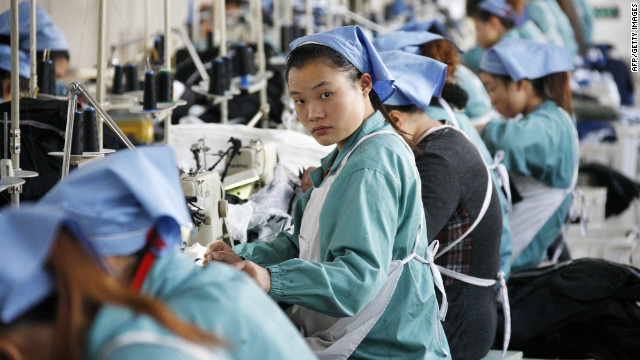|
CNTEX Exclusive: One year after China launched the stimulus package and regained economic growth momentum, the textile industry has overcome serious difficulties and has made new developments as policies come to the fore. The added value of China's textile industry was up 11.1% in Nov. 2009, the highest since March, according to the CNTAC Statistics Center.
The shift from exports to home market
As United States and Europe which stand as the major markets for Chinese textile exports, have become gloomy under the expanding impact of crisis, more and more Chinese textile and garment enterprises have felt the chill and decided to turn their eyes away from overseas markets and focus back on the domestic market. China's large domestic demand helped insulate the country against the worst of the global crisis and the effort now is to bring the economy back to 8.5 per cent growth.
China's retail sales were RMB 1.17 trillion in October, up 16.2% year on year, said the National Bureau of Statistics. There was a 22.4% increase in sales of apparel and textile.
Export recovery not yet assured
In October, China's textile and apparel export to U.S. value totaled 136.29 billion yuan, down 11.3 percent, 0.15 percentage points lower than the September figure. Of which, textile export value to U.S. totaled 48.394 billion yuan, down 12.9 percent; apparel export value to U.S. totaled 87.896 billion yuan, down 10.9 percent.
Textile and garment product deals reached 3.42 billion US dollars during the 106th China Import and Export Fair, or the Canton Fair, in southern China's Guangzhou city, up 5.9 percent from last session, according to information of the fair's organizing committee. Deals on garments and accessories jumped 10.5 percent to 1.79 billion dollars, while textile product deals inched up 1.4 percent to 1.63 billion dollars. Now the industry is gradually recovering, but is not yet on a firm foundation. Textile deals at the Canton Fair were featured by short-term, small, urgent, and low-level orders. Export prices are still under heavy pressure.
Manufacturing rebound underway
The Purchasing Managers' Index (PMI) of China's manufacturing sector rose to 55.2 percent in October, up 0.9 percentage points from the previous month. The index was 0.6 percentage points higher than the number in September, when the PMI edged up only 0.3 percentage points to 54.3 percent. It was the eighth month in a row that the PMI reading stayed above 50. A reading of above 50 suggests expansion, while one below 50 indicates contraction. Zhang Liqun, a researcher with the Development Research Center of the State Council, said the continuous rise of the PMI reading last month was a reflection of the fact that China's economy was on an upward track.
From January to October, the total industrial production value of statistics-worthy Chinese textile enterprises edged up 0.8 percent year-on-year to CNY3068.9 billion, 8.88 percentage points higher than the same period last year. Of which, yarn output 19.43 million tons, up 0.8%, 11.22 percentage points higher than the same period last year; fabric 45.9 billion metres, up 0.8%, 3.04 percentage points higher than the same period last year; chemical fibre 22.45 million tons, up 0.4%, 14.46 percentage points higher than the same period last year; and garment 19 billion pieces, down 3.8%, 1.18 percentage points higher than the same period last year.
Investments steadily rising
From Jan. to Dec. 2009, China has made an investment of 241.8 billion yuan in textile industry, up by 7.91 percent over the same period last year. China textile industry registered new projects totaling 6395, up 21.67% that of the Jan.-Oct. 2008 period, according to the Statistics Center of CNTAC.
China textile industry has flown the China flag high but we have for long looked outward. Recession is having an impact but the Chinese textile industry is resilient and we have to tackle the near-term issues while keeping in mind the long-term view.
|
|
Textile Industry Posts Recovery
Updated: 2009-11-30 Source: Gracie Guo

Recommended News
Photo Gallery
Most Popular



